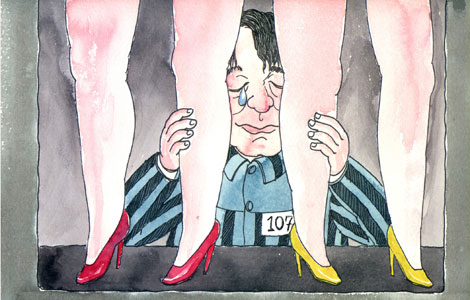Move to free up interest rate 'symbolic'
Updated: 2013-07-23 10:29
(Xinhua)
|
|||||||||||
BEIJING - China's removal of lending rate control is a key step in interest rate liberalization, but it has a principally symbolic meaning and its practical impact on bank behavior is limited, experts have said.
"No banks in practice offer discounts close to 30 percent from the benchmark lending rate," said Zhu Haibin, J.P. Morgan China chief economist, on Monday.
Zhang Zhiwei, chief China economist at Nomura Securities Co Ltd, said the lending interest rates mostly are above the floor which was scrapped this time and that, due to pressure from the current sluggish economy, banks are not likely to lower their lending interest rates.
Ye Tan, a well-known economics commentator, said the move can benefit big enterprises, but has little to do with medium-sized and small ones.
Lending rates primarily are based on the credit of enterprises or individuals and thus in practice, large enterprises with governmental support can get loans with cheap interest rates more easily, she said.
The announcement from the People's Bank of China (PBOC), or the central bank, does not touch on deposit rates, which banks can now offer at a maximum 10 percent premium above benchmark deposit rates and the premium is binding in practice, Zhu said.
The J.P. Morgan expert added, "We expect that the PBOC will move forward in interest rate liberalization in the next six to 12 months, by gradually widening the premium range above the benchmark deposit rates, perhaps starting with long-term large deposits."
More importantly, the central bank should also remove restrictions on bank lending, for example loan quotas and lending restrictions by sector, and establish a market-based yield curve, with the ultimate objective of shifting from quantitative measures to price-based measures of monetary policy instruments, Zhu added.
Today's Top News
Chinese police question employee of AstraZeneca
Quake in NW China kills 89, injures 700
Kate gives birth to a baby boy
New visas to boost family reunions
Huawei launches mobile app contest in EU
China to implement stricter air quality controls
China's FX purchases decline
Police get drug giant's help in bribery scandal
Hot Topics
Lunar probe , China growth forecasts, Emission rules get tougher, China seen through 'colored lens', International board,
Editor's Picks

|

|

|

|

|

|





